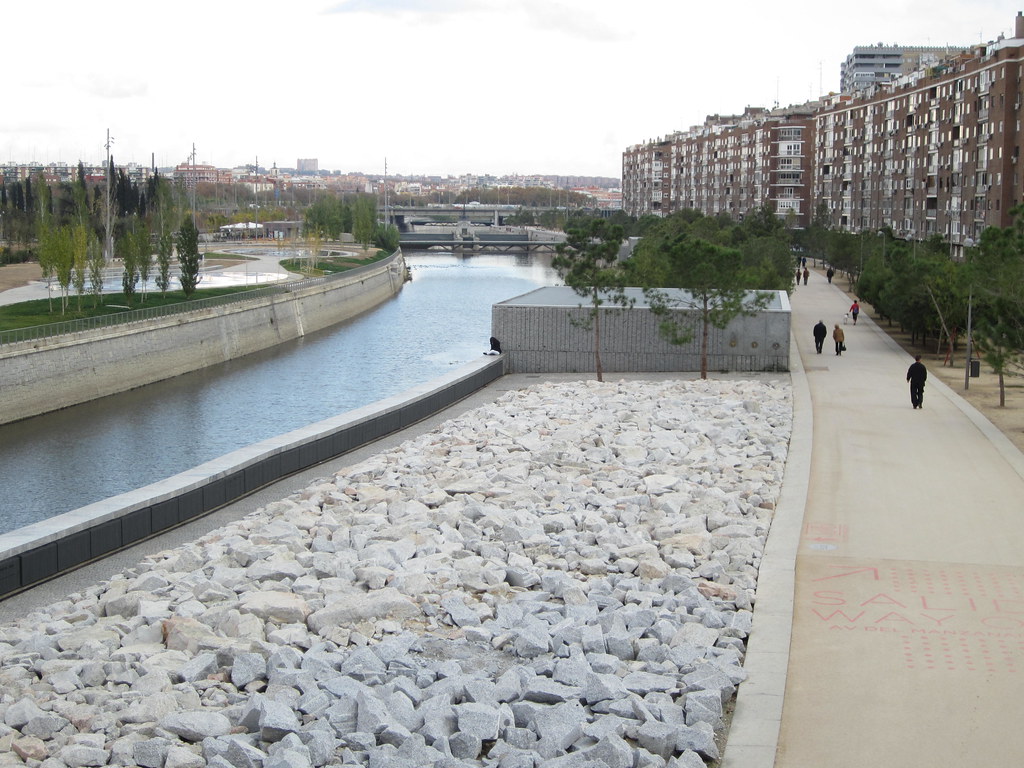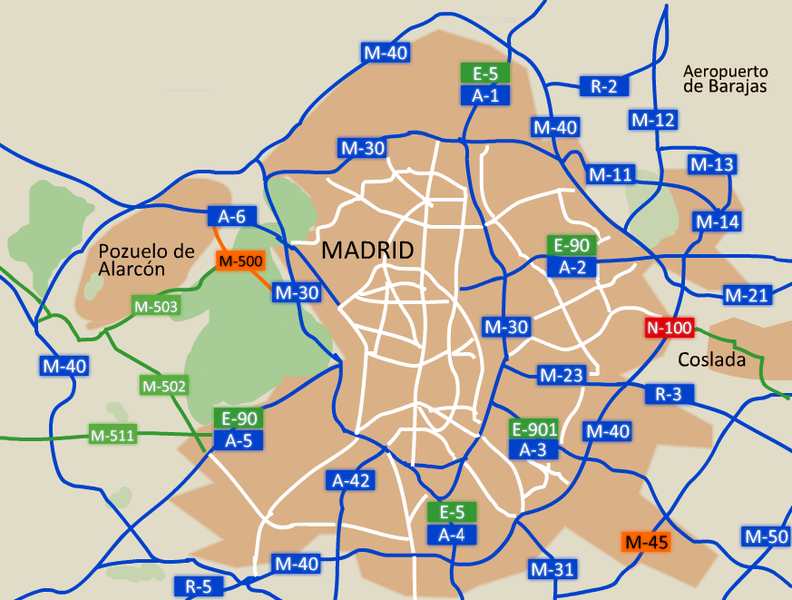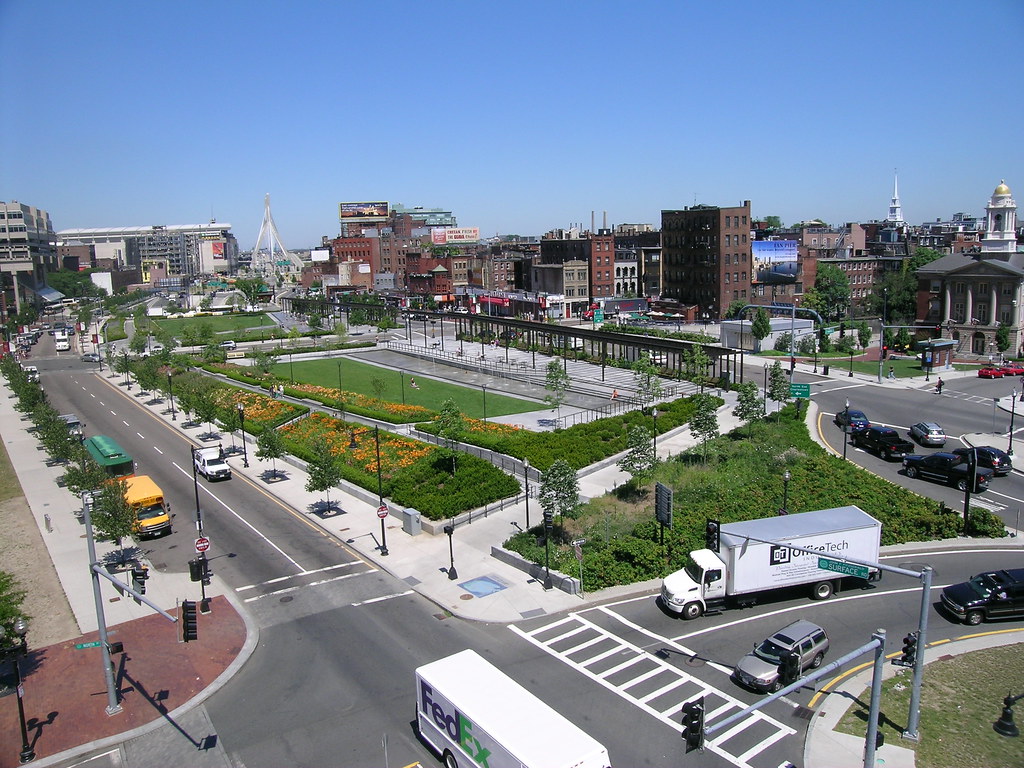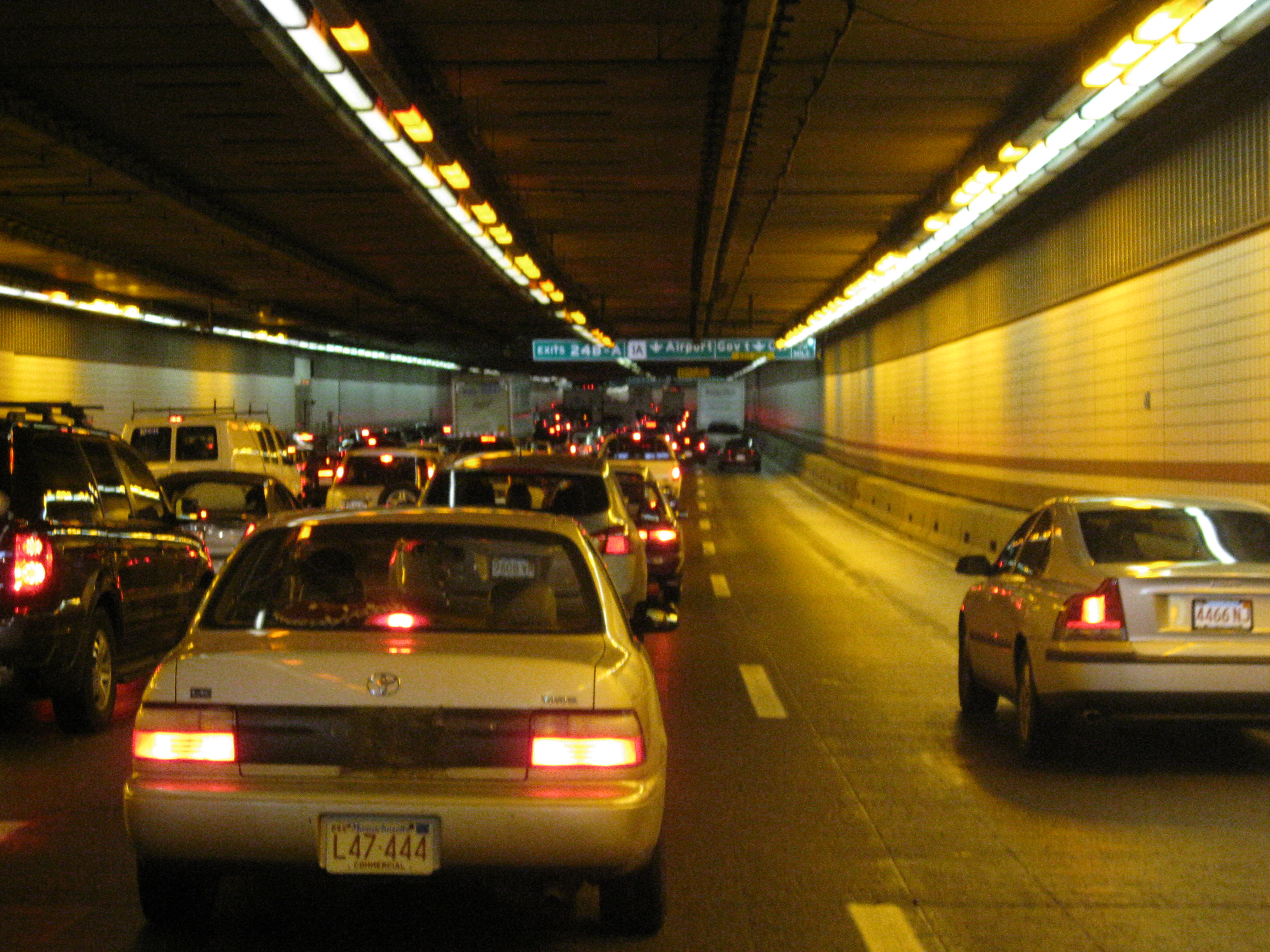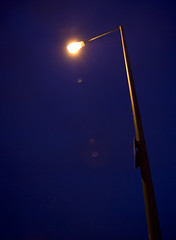How can one person be so incredibly correct on one issue, and so utterly wrong on another? Instead of tearing my hair out I've decided to write a blog post for the first time about this particular author, Nathan Lewis. I will begin with the positive aspects.
I was introduced to his writings by a link from
The Old Urbanist, and I was hooked almost instantly. The essay
Place and Non-Place is a typical example of Nathan's writing on this topic. The presentation is simple, maybe too simple, but that is fine by me. The style is clear, effective, and to the point. Brutally so. And it is illustrated by pictures from real-world examples. These pictures are so illuminating that they nearly make the argument on their own.
 |
| Compare and Contrast. Genius! |
The basic thrust is simple: Traditional Cities (e.g. Paris, Tokyo) are wonderful places to live, while Hypertrophic Cities (e.g. Las Vegas, Dubai) are horrible places. Of course, there are many places with both facets (e.g. New York City, Seoul). The picture on the right depicts the kind of stark contrast that is expressed so well in his essays: comparing a Hypertrophic portion of Seoul to a Traditional portion of Paris. The Hypertrophic City has a grid, tall buildings, and cars. The Traditional City has narrow streets, walk-up apartments, and multitudes of people who love it.
This aerial view doesn't even begin to capture the whole story. As he relentlessly points out, the Hypertrophic City is at its best when viewed from a helicopter. The people in a Traditional City largely disregard this perspective: after all, nobody had an airplane prior to the 20th century! Day to day life is conducted on the ground, and that is where you will find the reason that Traditional Cities succeed and Hypertrophic Cities fail. The difference can be captured in three words:
Really Narrow Streets.
 |
| Narrow Streets in Osaka |
I have only one slight quibble with this principle, and it is not an objection at all. Really Narrow Streets is a wonderful idea, but it needs to go together with Really Small Blocks. When land is valuable, the two ideas should be corollaries, but it is important not to forget them both. In this way, Nathan is making part of the same argument made by
Jane Jacobs fifty years ago. Certainly, the same goals are shared. Jacobs goes on to describe further conditions for successful city growth, including mixed uses and density. These are also important, but should largely arise naturally if not explicitly regulated out of existence by misguided or malignant local government. Really Narrow Streets combined with Really Small Blocks make a pedestrian-friendly, automobile-hostile environment that is conducive to building Really Nice City environments.
I cannot say enough about how wonderful Nathan's essays on cities are. Some might be put off by the casual or even arrogant tone, but I find it to be engaging because his arguments are so well backed up by compelling real-world examples. And great photographs. Instead of having me copy further arguments from him, just go ahead and read. Here is a sampling of essays and series of essays. This stuff should be obvious, but for some reason, we've gotten it incredibly wrong over the past century.
Having read a bunch of his essays up-front, I decided to find out more about this author and clicked on a link to his
main page.
 |
| Oh No! He's a Crazy Gold Bug! |
|
 |
| My immediate reaction. Rendered in kitten form. |
|
How could someone who writes so well on cities and makes such great arguments be so staggeringly foolish to think a return to the Gold Standard is a good idea? To go so far as to even write a published book, and numerous articles in magazines on the subject?
It is madness in this modern age to think that we would want to tie the fate of the world's largest economy to the fluctuations in one malleable, yellowish metal commodity.
What is especially striking is not necessarily the gold-buggery, but how it flies in the face of many of his same arguments that are successfully applied to urban issues. Let us consider his recipe for successful "Traditional-style" city growth.
Really Narrow Streets, naturally, and also
Low Taxes, Stable Money. (See for example,
No Growth Economics)
Germany, Italy, France, Japan, and Switzerland, among others, are often cited as supporting many of the most wonderful Traditional Cities in the world. What else do these countries have in common? High Taxes and Government-backed Paper Currency (of some form). In other words, when it comes to economics, the real-world examples he wielded before are now in complete disagreement with him!
To be fair, he does seem to understand and attempt to address many of the basic objections, such as in
Gold Standard Fallacies.
In short, a gold standard is a system which connects the value of money with the value of gold. The simplest way to do this is to make coins out of gold, which trade at their full commodity value. But that is a very archaic approach, and not well suited to today's world.
Well at least we can agree on that. He addresses the shortcomings of most gold standard proposals in various writings, such as
A Gold Standard is a Value Peg, where he writes:
The gold standard was never a rule that said: "The number of dollars in circulation will be fixed at $600 million" or something like that. It should be obvious that if you fix the supply of dollars, but demand fluctuates, the value of the dollars will go up and down. Thus, you can't have a value peg, like a gold standard, and a fixed supply of money. It's the adjustment of supply -- i.e. a changing amount of dollar base money -- that allows us to make an otherwise worthless paper chit have a market value equivalent to gold.
In order to maintain a fixed price for gold, it is up to the central bank to increase or decrease the amount of currency in circulation. This could be arranged in several ways. Perhaps the head of the central bank wakes up each day, takes a look at the current price for gold, and then issues an order to add or remove some amount of currency based on that price. The next day, presumably, the price of gold is closer to the target and further adjustments may or may not be necessary. In this way, the price of gold can be kept stable over the course of population and economic growth.
This is a wonderful way to ensure that the price of gold is stable. If that is all we cared about then certainly we should do it. However, most people don't care about the price of gold. Most people care about buying the things they need and earning enough money. Entrepreneurs are concerned about attracting investment and potential customers. Business owners are concerned about profit margins. And the government is concerned with keeping the economy growing and at full employment. None of this has anything to do with the price of gold.
The problem with Nathan's analysis is that he only looks at one side: he is concerned about the central bank injecting large amounts of currency into the system which devalues it. However, there is another way this could happen: if the supply of gold in the world begins to overwhelm demand, then the price will fall. In order to prop up the price of gold, the central bank begins printing currency. The price of gold may return to its previous value, but now we've instigated inflation on every other price in the system. And for what reason? Just because of an overabundance of some shiny metal? How does that have any bearing on the economy at large?
The story is worse for deflation. Demand for gold may outstrip supply, or perhaps speculation drives the price up. Then the central bank responds by removing currency from circulation, driving prices down overall. Suddenly, businesses aren't making as much money and can't afford to meet their obligations. Employees are being forced to take wage cuts, never an easy thing. The price of goods they buy may have fallen as well, but any loans they have are suddenly much more burdensome. The interest payments continue at the same nominal amount but there is suddenly less money to pay them. People begin to default on loans. This causes a chain reaction as banks lose money, and businesses depending on those banks can no longer do so. More people default. This is the story of deflation. And it was driven not by anything fundamental, but just a change in the price of gold. This outcome must be avoided, but with the gold standard, there is no way out.
Of course, Nathan does devote some words to the matter of gold stability. I think he realizes that without stable gold, there is no stable money in his system.
If we look at the past 40-odd years of floating currencies, we find that gold (and floating currencies) still behave AS IF gold is stable in value. In other words, when the "price of gold" changes, it is the floating currency changing value, not gold. If we look at the past 40-odd years of floating currencies, we find that gold (and floating currencies) still behave AS IF gold is stable in value. In other words, when the "price of gold" changes, it is the floating currency changing value, not gold.
Unfortunately for him, that's simply not true. The price of gold has skyrocketed in recent years. However, other prices have not, as we struggle with disinflation overall. This indicates a case where demand is outstripping supply -- likely driven by speculation. Let's take a look:
Inflation over the last ten years, notice in particular how we dipped into deflation throughout much of 2009. And now let's take a look at
gold prices from the London Bullion Market Association. Notice how much variation there is? Check out 2009: it ranges from an average of $857 in January to $1135 in December, while over the same period the inflation rate of the dollar according to Consumer Price Index (CPI) was measured at 0.1%. This is not just about the dollar, as the price in euros was also hiked by a proportional amount. Inflation has recently (mid-2011) picked up again compared to 2009, but this appears to be a temporary spike due to a bubble in commodity prices. Gold prices continue to show no real relationship to CPI, a far more relevant measure to everyday people.
If the dollar was pegged to gold during this time, we would be suffering in a horrible deflationary spiral, and likely the Second Great Depression.
That's enough crank debunking for me. If you need more to read, then check out Barry Eichengreen's recent
article further demolishing arguments for a gold standard, including a good amount of historical perspective.
I still haven't answered the original question, which is: how somebody so sensible in one area can be so misguided in another? It's not a question of being impossible, as it is not, but rather: why not apply the same reasoning skills to both areas? I probably can't know for certain without being able to read minds. But I think it comes back to this desire for simple slogans.
Really Narrow Streets and
Low Taxes, Stable Money. Easy to repeat. Easy to put on a bumper sticker. But also too easy to oversimplify. Too easy to get caught up in the purity of the slogan. Too easy to bend perceptions to fit a neat idea. And too easy to overstep the thin line between genius and insanity.
I will continue to read Nathan and other authors with whom I disagree on some matters, as long as they remain fun and intriguing. It is good to be able to enjoy articles and to pick out the mistakes, as it keeps my mind sharp. I hope that in turn, they are able to adapt and fix their errors, in order to stay relevant and interesting.
